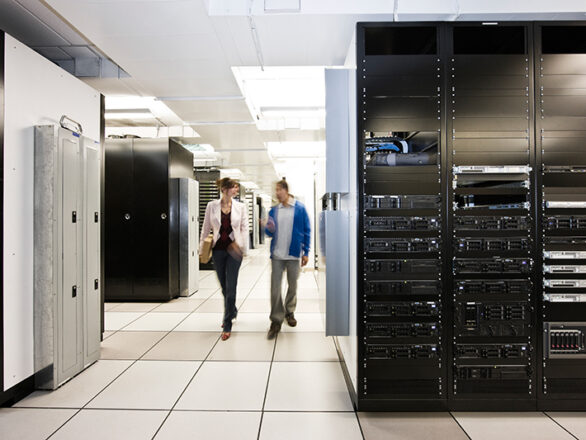Smart metering has revolutionised the way energy is measured, managed and consumed. With its ability to provide real-time data on energy usage, smart metering plays a vital role in modernising energy grids and improving the efficiency of energy markets. However, as this technology continues to evolve, so too must the standards that govern it.
The Rise of Smart Metering and the Need for Standards
The need for effective metering has always been a cornerstone of electricity management. With the introduction of smart meters, the world of metering has changed significantly. Smart meters offer a level of data granularity and real-time insights that traditional meters could not provide. This new capability necessitated the development of specific standards to ensure interoperability, reliability and compliance with regulatory frameworks.
In Australia, the National Electricity Market (NEM) has seen the gradual integration of smart meters, starting from early implementations in the 2000s, leading up to the widespread rollout seen today. With the move towards more sophisticated grid systems, such as those driven by Five-Minute Settlements (5MS), the importance of ensuring that metering systems are compliant with the right standards has never been higher.
Current Australian Standards for Smart Metering
In Australia, the integration of smart meters must comply with a number of key standards set by both National Measurement Institute (NMI) and Standards Australia. These standards not only ensure that the meters function reliably but also that they provide the level of precision required for the accurate billing and management of electricity consumption. Some of the key standards include:
AS 62052.11-2005: General Requirements for Metering Equipment
This standard provides the basic framework for electricity metering equipment, ensuring that meters meet minimum requirements for performance, construction and safety. It covers the general requirements for all types of meters, including smart meters, and establishes the foundation for more specific standards.
AS 62053.21-2005: Particular Requirements for Static Meters for Active Energy (Classes 1 and 2)
This standard outlines the requirements for static meters that measure active energy, specifically for commercial and industrial applications. Class 1 and Class 2 meters are often used in medium-scale applications where energy measurement data accuracy, while maybe adequate, is not as precise as Class 0.2S or Class 0.5S accuracy standards.
In addition to the changing landscape of metering for future or near future needs, Class 0.2S and Class 0.5S provide functions and capabilities that will be required, typically not offered in Class 1 and Class 2 accuracy meters.
AS 62053.22-2005: Particular Requirements for Static Meters for Active Energy (Classes 0.2S and 0.5S)
This standard is designed for highly accurate meters, often used in settings where precision is critical, such as commercial, large-scale industrial or grid operations. Class 0.2S and Class 0.5S meters are capable of offering more accurate measurements, which is essential for systems like the Five-Minute Settlement (5MS) where real-time data is necessary.
AS 61869.2-2021 (previously AS 60044.1-2014) - Instrument Transformers – Current Transformers
This standard deals with the requirements for current transformers, which are often part of metering systems. It’s essential for ensuring the accuracy of energy measurement, particularly in high-voltage systems or for large consumers.
These standards ensure that smart meters are accurate, reliable and capable of operating effectively in the Australian energy market.
The Need for Innovation and Next-Generation Standards
As the energy landscape continues to evolve, so too must the standards that govern smart metering. Several key trends and emerging technologies suggest that the next generation of smart meter standards will need to address new challenges and opportunities:
Integration with the Internet of Things (IoT)
The integration of smart meters with the Internet of Things (IoT) is one of the most exciting developments in the energy sector. With the ability to connect a wide range of devices, smart meters will increasingly serve as an entry point for advanced energy management systems. These systems will allow for greater demand-side flexibility, more sophisticated energy analytics and even the potential for peer-to-peer energy trading.
Incorporating IoT devices into the metering network will require new standards for communication protocols, data security and interoperability. Australian standards will likely evolve to include guidelines on how smart meters can securely and effectively communicate with other smart devices within the IoT ecosystem.
Support for Renewable Energy and Distributed Generation
As Australia continues its transition to renewable energy, smart metering standards will need to evolve to support a more decentralised grid. With growing numbers of solar panels, battery storage systems and electric vehicles (EVs), smart meters will play a crucial role in managing this distributed energy generation.
New standards will need to account for the complexities of monitoring and integrating various distributed energy resources (DERs). This includes defining how smart meters should measure energy flows between the grid and individual consumers, ensuring that meters can handle bi-directional energy flows, and providing data that can support grid balancing.
Data Privacy and Cybersecurity
With the increase in real-time data collection, there are heightened concerns around data privacy and cybersecurity. Smart meters collect vast amounts of personal data, including energy usage patterns, which can potentially be used for identifying consumer behavior.
The future of smart metering will require updated standards that address data encryption, user consent and secure data transmission to protect against hacking and misuse. These standards will be critical for ensuring that consumers feel safe using smart meters and that utilities can securely store and manage their data.
Real-Time Data for Grid Stability and Efficiency
As more energy markets move toward mechanisms like Five-Minute Settlements (5MS), which rely on real-time pricing and consumption data, the accuracy and responsiveness of smart meters become even more crucial. Standards will need to ensure that smart meters can operate at these heightened levels of precision and that they can communicate with market operators in real-time, enabling faster response times to fluctuations in energy supply and demand.
The Role of SATEC in Supporting Smart Metering Standards
SATEC has been at the forefront of smart metering technology, providing products that not only meet current Australian standards but are also built with future needs in mind. Our product range offers real-time data transmission, ensuring that energy providers can leverage the power of smart meters to improve grid management, support renewable energy integration and facilitate the efficient operation of mechanisms like 5MS. SATEC’s solutions are ready to adapt to the evolving standards, ensuring that our clients remain compliant as the industry continues to innovate.
The evolution of smart metering standards is vital for ensuring that metering systems continue to serve the needs of a modern, efficient and sustainable energy market. As technologies like IoT, renewable energy and real-time pricing reshape the industry, smart metering standards will need to evolve to support these changes.
With Australian standards already providing a solid foundation, the future will see further innovation to support data privacy, IoT integration and more efficient grid management. SATEC is proud to play a role in this transformation, providing advanced metering solutions such as the EM133-XM, BFM136, PM180, BFM II and PRO-series metering that ensure compliance and help pave the way for the future of energy management.








